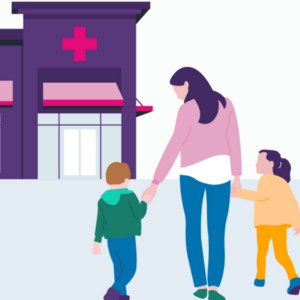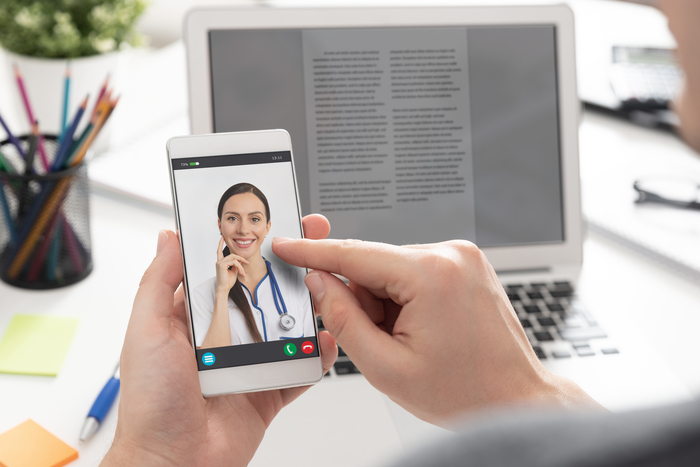
Feel better faster. Get care today.
From the clinic or your couch. Find high quality, same-day urgent care for you and your kids. Book an urgent care visit today.

For many of us, keeping up with the spread of COVID-19 has started to feel like a full-time job. Feelings of uncertainty are prominent throughout the United States and the world. The reality is that, while most Americans will likely be exposed to COVID-19 at some point (according to the Centers for Disease Control, the “CDC”), it can take up to two weeks for people to start showing the typical COVID-19 symptoms. Some people never show symptoms at all, so knowing if you’ve come into contact with someone who has COVID-19 can be nearly impossible.
As an informed citizen, you’re taking your health and wellbeing during this scary time seriously. Social distancing, thorough hand washing, and voluntary self-quarantine are proactive ways to help “flatten the curve.”
With reports of millions of people being ordered to “shelter in place,” and doctors and nurses warning about shortages of medical supplies and hospital beds, knowing when–and where–to get care for potential COVID-19 symptoms can be confusing.
Thinking that you may have COVID-19 is scary enough without having to wonder how–or if–you’ll be able to see a doctor. Thankfully, this pandemic is happening during a time of technology-enabled healthcare that can help prevent the spread of this nasty virus and get you the information and treatment you need. So, is telemedicine the best way to treat COVID-19? Read on for everything you need to know about telemedicine and the coronavirus.
The COVID-19 outbreak has created an all-hands-on-deck situation in our society where the best chance of containment comes from everybody doing their part to stop the spread. Whether or not you think you may have been exposed to or contracted COVID-19, isolating yourself and avoiding contact with other people is the best way to help prevent the spread of the virus.
If you think you’re displaying symptoms of the coronavirus, you may be tempted to head straight to urgent care. However, packed waiting rooms at urgent care, the hospital, and your doctor’s office can make it nearly impossible to practice the kind of social distancing needed to slow the spread of COVID-19. In fact, many urgent care centers are implementing policies for “drive-by” screenings, allowing patients to stay in their cars while being tested through the window, or asking people with coronavirus symptoms to call ahead instead of showing up at the center, to prevent people who do have COVID-19 from infecting other patients.
Right now, the CDC recommends that everyone should use telemedicine whenever possible because virtual visits help maintain social distancing and decrease the spread of the virus. However, you can still go to the urgent care for issues that aren’t related to the coronavirus, and booking ahead with Solv can help you spend as little time as possible in the waiting room. Not sure if you need telemedicine or urgent care? Solv has a guide for that.
Using the technology you likely use every day, such as video chat and text messaging, telemedicine allows you to see a doctor without leaving your home. Great for days when you’re feeling sick and don’t want to change out of yoga pants. Critical for times like this when leaving your home could mean spreading and/or catching the coronavirus.
Not only does telemedicine allow you to do your part to help contain COVID-19, but you’ll also get to see a doctor a lot sooner than you would if you went to the hospital. (ER overcrowding was an issue long before the coronavirus outbreak, but now it’s expected to get even worse.) Instead of heading straight to the hospital or urgent care, you should call your doctor (or schedule a telemedicine appointment) to get advice on what to do next.
Plus, heads up, there’s not much that doctors and nurses can do in-person to treat COVID-19 that they can’t do in a virtual visit. During a telemedicine visit, a doctor will assess your symptoms and give you medical advice, just like they would in person. They won’t be able to test you for the coronavirus, but they can give you a prescription for a test and direct you to a testing location if they think it’s necessary.
If you think you may have COVID-19, the last thing you want is to have to wait (and worry) for who-knows-how-long to see a doctor. And you shouldn’t have to. Telemedicine is a great alternative that will get you the answers you need, so you can start feeling better as soon as possible (and practice social distancing in full health). If you’ve never had a virtual doctor’s visit before, here’s a brief rundown of what you can expect:
Your telemedicine visit should take about as long as a typical doctor’s visit, minus all the wait and travel times. To make this option even more appealing, you can do the whole thing from the comfort of your own bed, which is a definite plus when the last thing you want to do is put on real clothes and face the outside world full of mysterious germs.
While you can’t be tested for coronavirus over a video chat, a telemedicine appointment can help you determine if testing is necessary in the first place. If it is, your doctor will help you figure out how and where to get tested for COVID-19.
If, during your virtual visit, your doctor sees any severe symptoms–difficulty breathing, chest pain or pressure, and bluish lips or face may mean that you need immediate medical attention–they won’t hesitate to tell you to go to the ER.
In times like these, it’s really up to everybody to do their part to help stop the spread of the virus. If you think you may have COVID-19, the CDC recommends:
This whole experience is scary, no doubt. Know that we’re all in this together, and though you’re isolating yourself, you’re not alone. If you’re worried about COVID-19 or any other concerns during this time, don’t spend another moment in the dark about your health. Visit the Solv coronavirus help page to schedule a telemedicine visit with a doctor today.
The CDC recommends that everyone should use telemedicine whenever possible to maintain social distancing and decrease the spread of the virus.
Telemedicine allows you to see a doctor without leaving your home, thus maintaining social distancing. It also prevents you from potentially spreading or catching the virus in crowded hospitals or urgent care centers.
While doctors can't test you for the coronavirus during a virtual visit, they can assess your symptoms, give medical advice, prescribe a test, and direct you to a testing location if they think it's necessary.
During a telemedicine visit, you'll discuss your symptoms with the doctor and whether you may have been exposed to the virus. They'll be able to see any symptoms just by looking at you. If they think you have COVID-19, they will likely prescribe a test and direct you to a testing site.
If, during your virtual visit, the doctor sees any severe symptoms such as difficulty breathing, chest pain or pressure, and bluish lips or face, they will tell you to go to the ER for immediate medical attention.
If you think you may have COVID-19, the CDC recommends staying home, avoiding public transportation, calling ahead before visiting a doctor or the ER, wearing a face mask around others, covering your nose and mouth when you cough or sneeze, washing your hands thoroughly and often, cleaning all surfaces that you touch, and monitoring your symptoms.
You can schedule a telemedicine appointment by going online, finding a provider, and booking a secure video visit. If you use Solv’s website, you can instantly book a telemedicine appointment.
Yes, you can still go to urgent care for issues that aren’t related to the coronavirus. Booking ahead with Solv can help you spend as little time as possible in the waiting room.

From the clinic or your couch. Find high quality, same-day urgent care for you and your kids. Book an urgent care visit today.